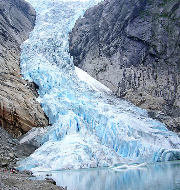Glaciers melting at 5 to 20 metre rate annually: Government
Majority of glaciers in India including Gangotri are retreating (melting) at varying rates ranging from 5 to 20 metre per year due to global warming.
It was announced by Minister of State (independent charge) of Environment, Forest and Climate Change in Lok Sabha in a written reply.
Key Facts
- The revelations were based on the studies carried out by ISRO, Wadia Institute of Himalayan Geology (WIGH) Dehradun and other institutions.
- Gangotri, one of the largest glaciers (30 km long) of Uttarkahand followed by Satopanth glacier (14 km) are retreating but not at an alarming rate.
- Various studies carried out on melting of glaciers by the in-situ measurements as well as remote sensing data have indicated that the rate of retreat is “not uniform” for all glaciers.
- Dokriani glacier in Bhagirathi basin is retreating between 15 and 20 metre per year since 1995. Chorabari glacier in the Alaknanda basin is retreating at rate of 9 to 11 metre per year (2003-2014).
- The glacier area has decreased from 599.9 sq km (1968) to 572.5 sq km (2006) in the Bhagirathi and Alaknanda river basins which has around 82 glaciers. It implies a net loss of 4.6 per cent of the total area.
- Glaciers in the Uppar Alaknanda basin and upper Bhagirathi basin have lost 18.4 sq km (5.7 per cent) and 9.0 sq km (3.3 per cent) area respectively from 1968 to 2006.
Month: Current Affairs - July, 2016


